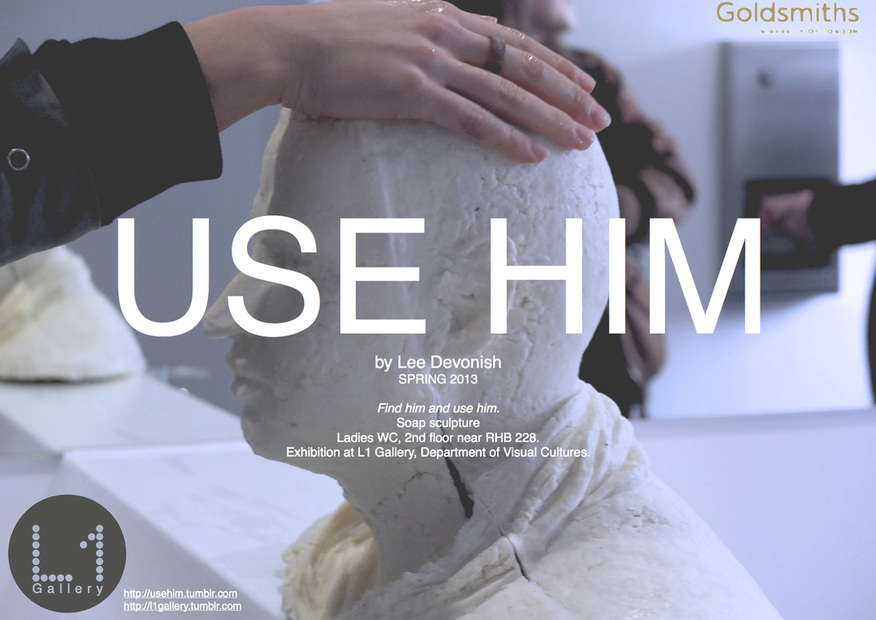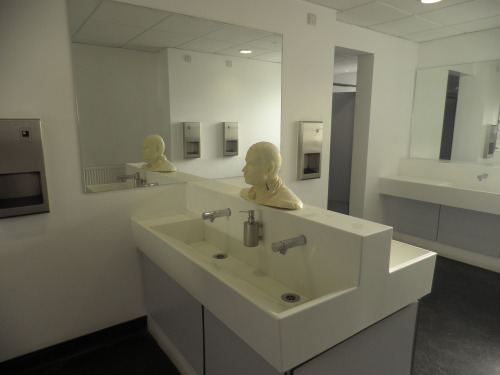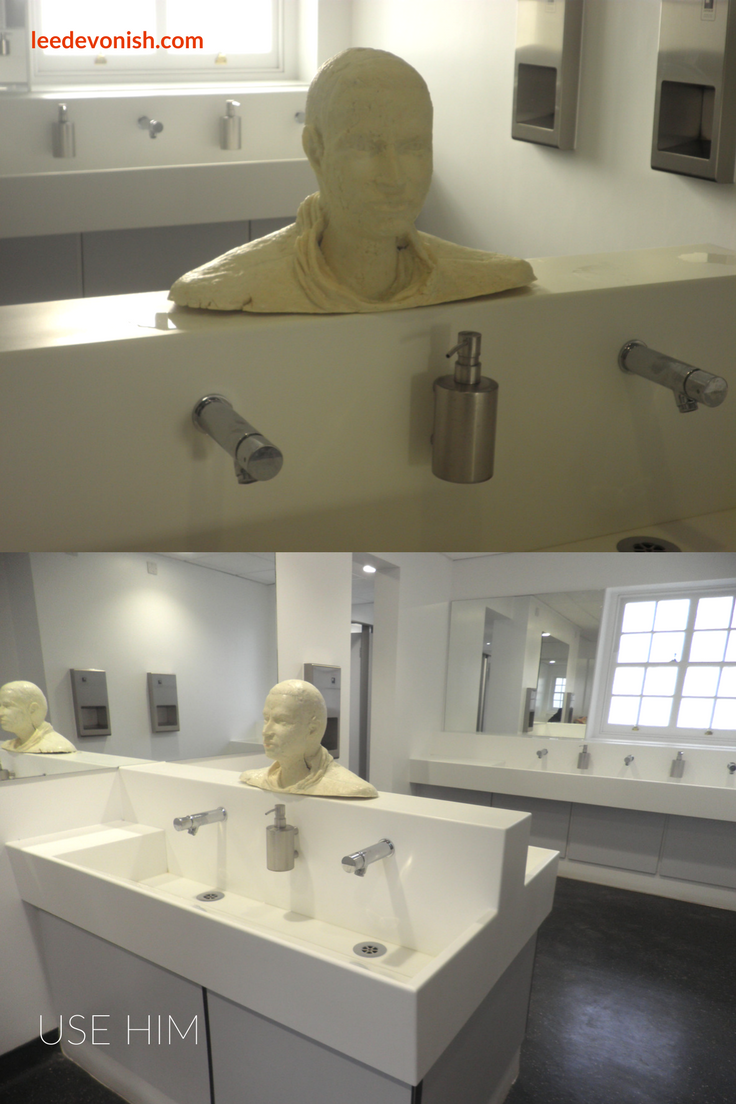Use Him – soap sculpture installation, 2013
Use Him was a work that was intentionally… well, slippery.
I’d hoped to make use of the sculptures I’d produced for my BA degree show in 2012, and I’d envisioned making a video of my soap and wax casts being used – washed away or melted.
Soapy serendipity
Whilst I was studying and working at Goldsmiths almost a year later, it occurred to me that I finally had the perfect circumstances to mount the project. I decided to put my soap man into one of the female toilets, and see if anyone would use him.

Feminism and fun.
It was about the usual things – feminism, objectification, looking, function – but I wanted it to be fun. It was simple, and I hoped it would be effective; however, I worried that it would be too simple, and be seen as too literal, too obvious. Still, I wanted to do it in that way – in public but in private, with the willing or unwilling participation of the women using the lavatory.
The participatory aspect would make his wastage more meaningful than if I had filmed him on my own. Also, it would raise a debate over exclusion and the female gaze – the male students and members of staff were only allowed to view the photographs that were exhibited in the gallery space.
It may have been an entirely new experience for them to be excluded from such an event by their gender.
I was always there, or so it seemed, working on some days in one department and studying for my MA in another, so I could take a photograph of the soap’s disintegration each day. I realised after a few weeks that I’d tied myself in to a somewhat onerous task, wandering the dimmed corridors of the Richard Hoggatt building with no-one else around.
Unexpected interactions
What I hadn’t expected was the vocal reactions he provoked.
I wandered into the strangest conversations in the toilets – most people spoke freely to whoever was nearby, and as they didn’t know that I had made him and put him there, I was able to find out what they really thought about my work. Unsurprisingly, some women hated him.
He did become rather slimy and repulsive close to the end, so it was to be expected. What I hadn’t expected was how provocative it was to some.

The fresh audience
One of the cleaners was positively incensed by his presence.
She swore and ranted, and was more angry than I’d ever seen anyone become thanks to a piece of art. This actually made me fairly happy – I’d expected a much more blasé response all around. This did cause me to think about the division between the art ennui sufferers and the art uneducated – is it better to know less if it mean you feel more strongly?
Another woman was raving about it when I walked in – she was saying to her friend that it was the best thing she’d ever seen at Goldsmiths. Naturally, that’s the one review I choose to recall most often! By the way, I did tell both women that I was the one who made it… but only after I’d got a piece of their minds.
Taken, then stolen…
The sculpture was actually removed from the loos on the third day of the exhibition/installation – I panicked, as I thought it had been stolen, but it turned out to have been removed by the security guards, probably on the complaints of the cleaners.
I retrieved him and put him into a different toilet for a few days whilst I smoothed things out, and by day 5 he was back in his old place.
Still, he came to a similar end on day 29. He disappeared and I never saw him again – I wondered if he was done in by the cleaners, but I hoped that he had been stolen instead. I’d be happy if he ended his days in some student’s shower, scaring the flatmates and hopefully, actually being used.
You can see all of the pictures here at http://usehim.tumblr.com/

